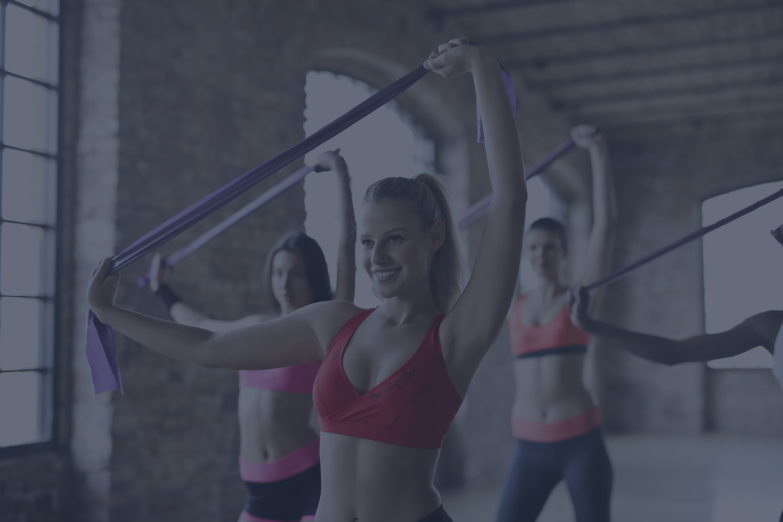
There are a plethora of reasons that get people into exercise. Some want to lose 20 pounds and look a little leaner. Some do it for the health benefits and longevity that comes with having a healthier body.
Trained athletes know that when done right, training can help improve your athletic performance so that you can jump higher, get stronger, and run faster. This is what we refer to as 'functional training', and it's an important tool whether you're an elite athlete or just want to get better at everyday movements like walking or lifting heavy items without injury.
Learn a little bit more about how you can use functional training to improve your skills on and off of the field.
What is functional training?
Many weightlifting routines today are based around aesthetics - people design workouts that will help you look fit and get your muscles popping. A lot of those exercises lack much other purpose than to get you looking good.
Functional training is the complete opposite. A functional strength workout focuses on helping your body function better. This will likely help your body look better as well but that is not the goal.
Functional strength training is based on natural movement patterns that we use in everyday life. It stays away from weight machines, which isolate muscles to work them in a way that is unnatural for our bodies.
It will make you stronger compared to your body weight and train your core strength. Core strength is the foundation of all body strength, as it's required to stabilize your body no matter what movement you're performing.
What are the 7 functional movements?
There are 7 functional movement patterns that our body uses in our everyday lives. These are:
- Hinge - Bending over at the hips. This is usually performed improperly, placing pressure on your lower back. By tucking your hips to protect your lower back, you exercise the right muscles and avoid injury.
- Squat - Bending at the knees and lowering. When performed correctly, it will protect your knee joints and strengthen your quadriceps and gluteal muscles.
- Lunge - Stepping forward with one leg and bending the knees. They are great for finding muscle weakness and imbalances and strengthening accordingly.
- Pull - Pulling yourself toward an object/ an object toward you. These exercises can be either horizontal and vertical pulling, and they tend to strengthen the muscles on the back of your body (triceps, back).
- Push - Pushing yourself away from an object/an object away from you. These can also be horizontal or vertical and are used when getting off of the ground from a lying position (biceps, shoulders).
- Twist - Twisting your body at the core. This includes turning to look behind you, throwing a ball, and jogging. They can be rotational (turning), or anti-rotational (resisting a turn).
- Carry - Carrying an object while walking. This includes playing stick sports like lacrosse and walking with strong core engagement and good posture.
Any well designed functional fitness routine will utilize a few exercises that hit every single movement type in order to build a well-rounded body. You want to train your body to be a fully functioning system that works together, not separate parts that work independently.
Is functional training effective?
The whole point of functional fitness is that it improves your body's ability to perform. Training for functional strength is therefore designed to be the most effective way to exercise.
There are 3 planes of motion within the body.
- The frontal plane involves side to side movement.
- The sagittal plane involves forward and backward movement.
- The transverse plane involves rotation.
Functional resistance training uses all 3 types of movement for optimal effectiveness. Most functional movements exercises are multi-joint so that you can work using several muscle groups and movements at once.
What are the benefits of functional training?
No matter the type of sport you play, functional exercises can be used to help you perform better.
Lacrosse is no different - many players struggle with injury, stress fractures, tight hip flexors, and poor posture. Using functional training to strengthen muscles will not only help prevent these injuries, but will also increase your strength, speed, and mobility on the field.
Resistance bands are a great addition to any functional exercises. They allow you to add some extra resistance to the functional exercises that generally use just bodyweight for added effectiveness.
You can use bungee bands to train resisted sprints, which increases speed and leg strength. Resistance leg bands can be used to increase leg strength for coordination, jumping, and running power.
How do I build a functional training program?
If you're training for a sports season you will want to start a functional fitness program at least 6 weeks in advance.
You will want to start the program with cardio 3-5x per week. You can choose whichever cardio works best for your body. If you're running, aim for 30 minutes to start. If you are biking or doing something that requires a little less physical exertion than running, aim for 45 minutes in each session. Work hard enough that you feel tired afterward - if the cardio is too easy it's not going to improve your fitness. This cardio will help build your heart health and allows you to recover more quickly.
You will want to incorporate your functional training routine 2-3x per week. Get a few resistance bands, and ensure that you are including at least a few different exercises that work each of the 7 categories of movement. Do not do this training 2 days in a row - your muscles need ample time to recover.
If it's in the budget, going to see a trainer to design a plan based on your specific needs is a great way to ensure you are getting the most out of your efforts. If not, we have compiled a list of some different exercises you can try from each category.
You can find a trainer locally through a gym, or you can look for a personal trainer online through The American Council on Exercise. Search their trainer database to find one you can connect with near you.
Functional Training Exercises
Hinge
- Romanian Deadlift
- Kettlebell Swing
- Conventional Deadlift
- Glute Bridge with Dumbbell
Squat
- Dumbbell Front Squat
- Overhead Squat with Resistance Band
- Kettlebell Squat
- Single-Leg Squat
- Suitcase Squat
Lunge
- Reverse Lunge with Dumbbells
- Bulgarian Split Squat
- Single-Leg Dumbbell Deadlift
Pull
- Seated Pull-ups
- Barbell Row
- Single-Arm Dumbbell Row
- Wide Grip Pull Down
- Bent-Over Row with Resistance Band
- Assisted Pull-up with Resistance Band
Push
- Push-up
- Elevated Push-up
- Shoulder Press with Resistance Band
- Barbell Military Press
Twist
- Russian Twists with Dumbbells
- Side Planks
- Plank Pull Throughs
- Pallof Press with Resistance Band
- Hanging Leg Circles
- Medicine Ball Rotational Throw
Carry
- Single-Sided Carry
- Double-Sided Carry
- Overhead Carry
Take a few exercises from each category to create your own routine, or add in a few of your own!
Final Word
You can and should use a functional fitness program to improve your athletic strength, agility, coordination, and mobility within your sport and your everyday life, alike.
By performing these exercises a few times a week, you will feel stronger and see a better performance within a few weeks!









Leave a comment (all fields required)